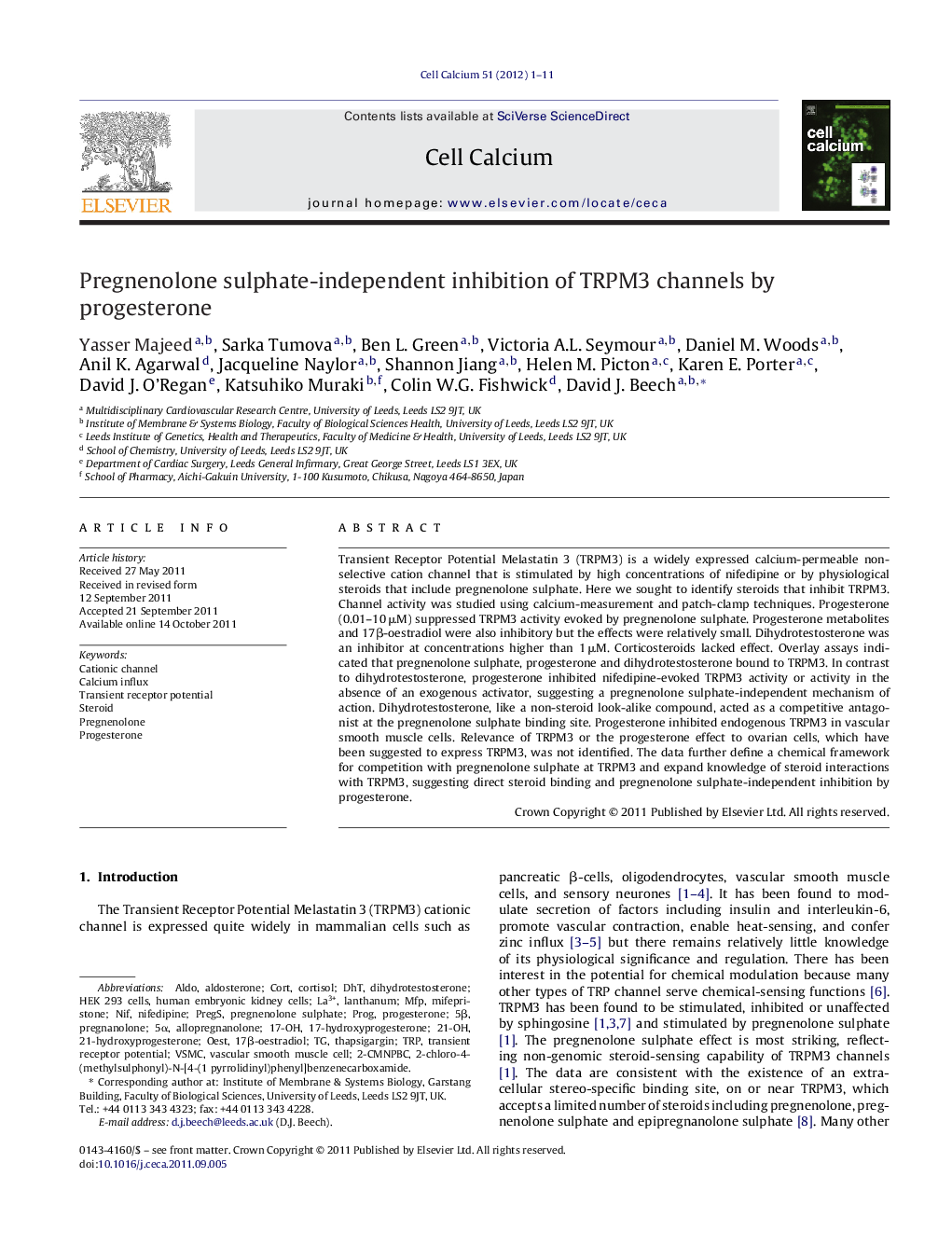| Article ID | Journal | Published Year | Pages | File Type |
|---|---|---|---|---|
| 10926311 | Cell Calcium | 2012 | 11 Pages |
Abstract
Transient Receptor Potential Melastatin 3 (TRPM3) is a widely expressed calcium-permeable non-selective cation channel that is stimulated by high concentrations of nifedipine or by physiological steroids that include pregnenolone sulphate. Here we sought to identify steroids that inhibit TRPM3. Channel activity was studied using calcium-measurement and patch-clamp techniques. Progesterone (0.01-10 μM) suppressed TRPM3 activity evoked by pregnenolone sulphate. Progesterone metabolites and 17β-oestradiol were also inhibitory but the effects were relatively small. Dihydrotestosterone was an inhibitor at concentrations higher than 1 μM. Corticosteroids lacked effect. Overlay assays indicated that pregnenolone sulphate, progesterone and dihydrotestosterone bound to TRPM3. In contrast to dihydrotestosterone, progesterone inhibited nifedipine-evoked TRPM3 activity or activity in the absence of an exogenous activator, suggesting a pregnenolone sulphate-independent mechanism of action. Dihydrotestosterone, like a non-steroid look-alike compound, acted as a competitive antagonist at the pregnenolone sulphate binding site. Progesterone inhibited endogenous TRPM3 in vascular smooth muscle cells. Relevance of TRPM3 or the progesterone effect to ovarian cells, which have been suggested to express TRPM3, was not identified. The data further define a chemical framework for competition with pregnenolone sulphate at TRPM3 and expand knowledge of steroid interactions with TRPM3, suggesting direct steroid binding and pregnenolone sulphate-independent inhibition by progesterone.
Keywords
DHTTrp5α21-hydroxyprogesteroneMFPPROGPregnenolone sulphateMifepristonenIFThapsigarginVSMCPregnanolone17-hydroxyprogesterone17β-OestradiolHEK 293 cellsLa3+AldoaldosteronePREGSSteroidallopregnanolonepregnenoloneDihydrotestosteroneVascular smooth muscle cellhuman embryonic kidney cellsLanthanumNifedipineCalcium influxtransient receptor potentialProgesteroneCationic channelCORTcortisol
Related Topics
Life Sciences
Biochemistry, Genetics and Molecular Biology
Cell Biology
Authors
Yasser Majeed, Sarka Tumova, Ben L. Green, Victoria A.L. Seymour, Daniel M. Woods, Anil K. Agarwal, Jacqueline Naylor, Shannon Jiang, Helen M. Picton, Karen E. Porter, David J. O'Regan, Katsuhiko Muraki, Colin W.G. Fishwick, David J. Beech,
